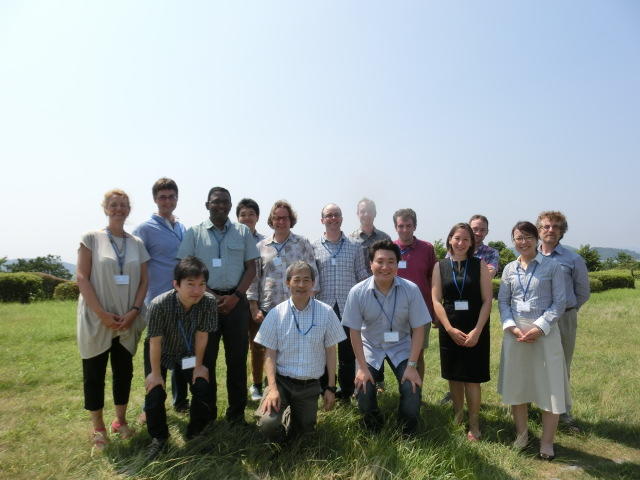NO.068 Synchronous Machine Translation
August 3 - 6, 2015 (Check-in: August 2, 2015 )
Organizers
- Jordan Boyd-Graber
- University of Colorado Boulder, USA
- Hal Daume III
- University of Maryland, USA
- Yusuke Miyao
- National Institute of Informatics, Japan

Overview
Description of the meeting
Synchronous machine translation is the task of automatically translating a foreign language while it is being spoken.When a sentence is being produced one word at a time in a foreign language, the goal is to produce a translation in a target language (e.g., English) simultaneously: with as little delay between the uttering of a foreign language word and the production of its English translation. A requirement for successful synchronous machine translation is to be able to predict what words are going to appear in the input stream, before they have been seen. This is particularly important when translating from verb-final languages like Japanese or German, into verb medial languages like English. Without the ability to predict the yet-to-be- seen verb, the translator has to wait until the entire sentence is uttered before anything beyond the subject can be translated. This is not just an issue of final-verb prediction; any significant reordering involves prediction in order to maintain simultaneity: for instance relative clauses or postpositions in Japanese.
This is an important task to study because effective human interaction with technology requires low latency. If translation systems have their built in latency plus the latency of a sentence, there is no chance for translation systems to be used widely for everyday conversations. Creating systems that can provide low-latency translations will enable better communication across the divide of language and culture.
The rest of this document describes:
1. Existing work for synchronous machine translation
2. The challenges of evaluating translations and obtaining training data
3. Predicting unseen components
4. Statistical frameworks for synchronous translation
These themes also form the four day schedule of the workshop.
Day 1: Existing Work
The first day of the workshop will highlight the existing work in this area conducted by invitees.
Simultaneous translation has been dominated by rule and parse-based approaches. Even projects like Verbmobil use a rule-based incremental decision-making module on top of a statistical translation module. Other recent approaches in speech-based systems focus on waiting until a pause to translate or using word alignments between languages to determine optimal translation units. Previous strategies for dealing with SOV to SVO translation use rule-based strategies (for instance, passivization) to buy time for the translator to hear more information in a spoken context or use phrase table and reordering probabilities to decide where to translate with less delay. Simultaneous translation is more straightforward for languages with compatible word orders, such as English and Spanish.
The organizers have recently developed a statistical approach that combines prediction of unseen elements and reinforcement learning to decide when to translation.
Day 2: Evaluation and Data
Statistical machine translation has become a performance-driven enterprise because of the introduction of universal, consistent evaluation mechanisms like BLEU and TER. However, these metrics focus only on translation quality. Effective simultaneous translation must tradeoff between translation quality and latency. Evaluating systems for simultaneous translation require metrics that are suitable to automatic evaluation but also reflect users’ needs. Day 2 will discuss proposals of metrics and data that can address this need.
Day 3: Prediction
One of the primary challenges is that essential sentence elements (such as the verb) in the source language don’t appear until well after they are needed in the target language. Thus, a required solution is to attempt to predict final verb. Day 3 will discuss probabilistic, supervised, and rule- based systems for predicting important aspects of source sentences.
Day 4: Frameworks
The final day of the workshop will discuss frameworks that tie each of these pieces together into a complete system that make tradeoffs given an evaluation framework, predict unseen components, and produce effective simultaneous translations. The final day will also discuss the challenges of incorporating other systems such as speech recognition, speech production, and communicating simultaneous translations through captioning, voice-over, or other techniques.
